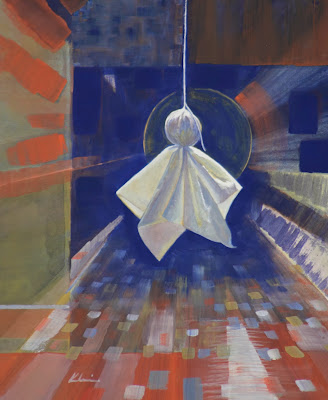It's rare, today, to find paintings done using casein. To help answer the public's questions regarding this medium, I wrote a little piece to help provide some basic information:
A Little Bit about Casein Paint
This little painting has been created with casein paint – one of the oldest kinds of paint known to mankind. Art historians date the first casein paintings to the time of the ancient Egyptians. Casein painting uses modified milk protein to bind the pigment (colors) onto a surface whereas oil painting typically uses linseed oil and acrylic painting an acrylic binder and, in a super-magnified sense, mosaics uses mortar as the binder and mosaic tiles as pigment. The advantages of using casein as a binder are many. It’s wonderfully archival, extremely versatile to create with and incredibly beautiful to behold. Before acrylic painting became popular in the second half of the 20th century, many artists painted in casein. Andy Warhol’s Popeye (1960) and Dick Tracy (1960) were done in casein and Native American artist, Oscar Howe painted with it extensively. As you can see, casein painting is in good company and - with reasonable care (keep it dry and if needed, dust with a dry cloth) - your new little painting will last for centuries.
The best ways to learn about a medium, however, are to either paint with it or observe as many pieces of work created with it as you can. Here are two more caseins of mine to help you with the latter:
 |
| Tiny Kleenex Ghost #5; casein on mounted paper; 7" x 5" |
 |
| Long Ago; casein on mounted paper; 13" x 8" |
No comments:
Post a Comment